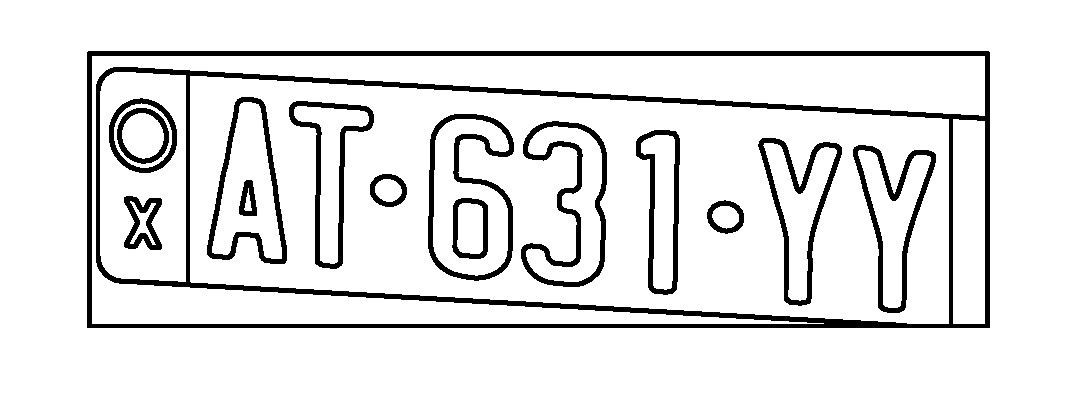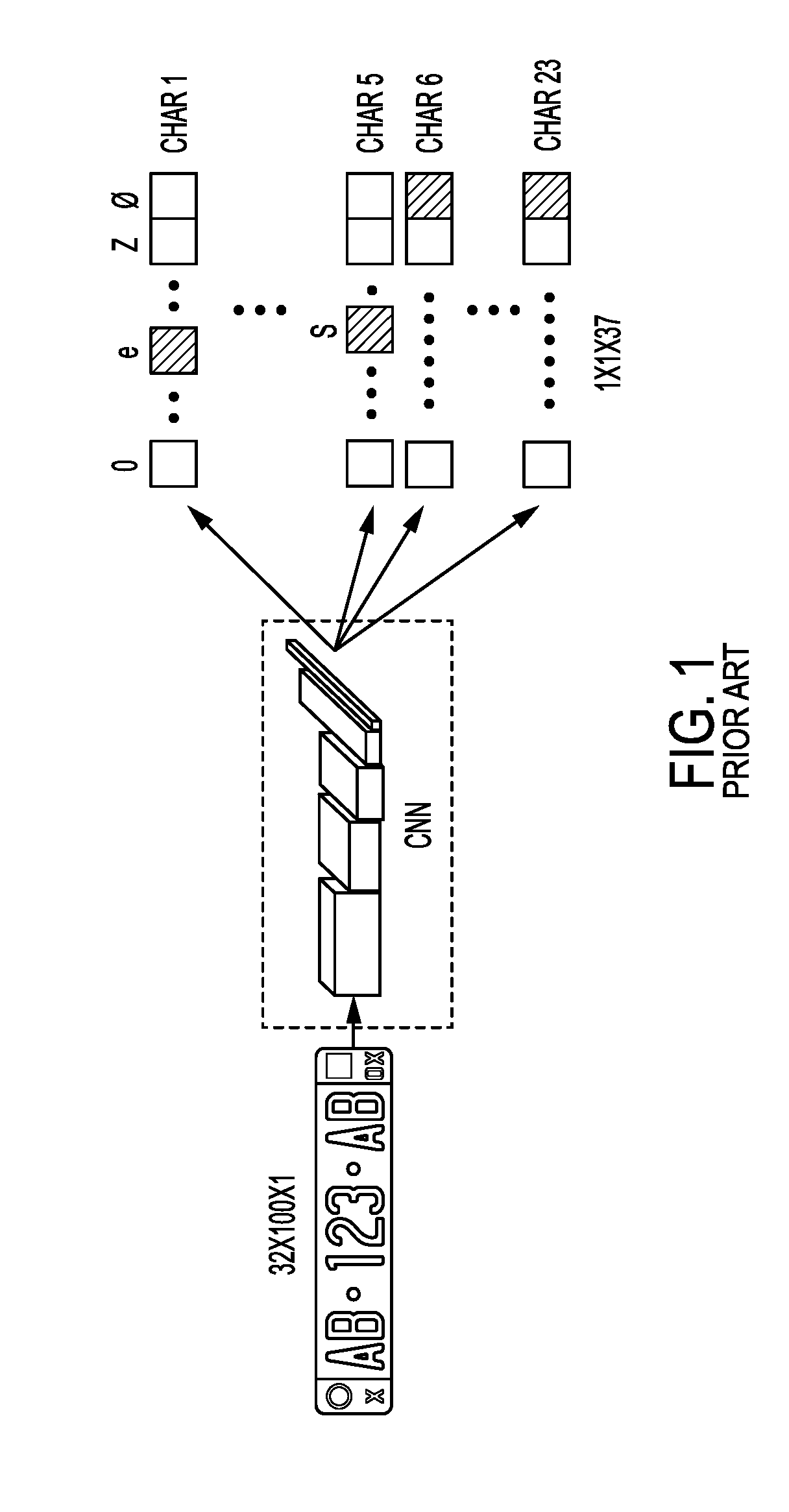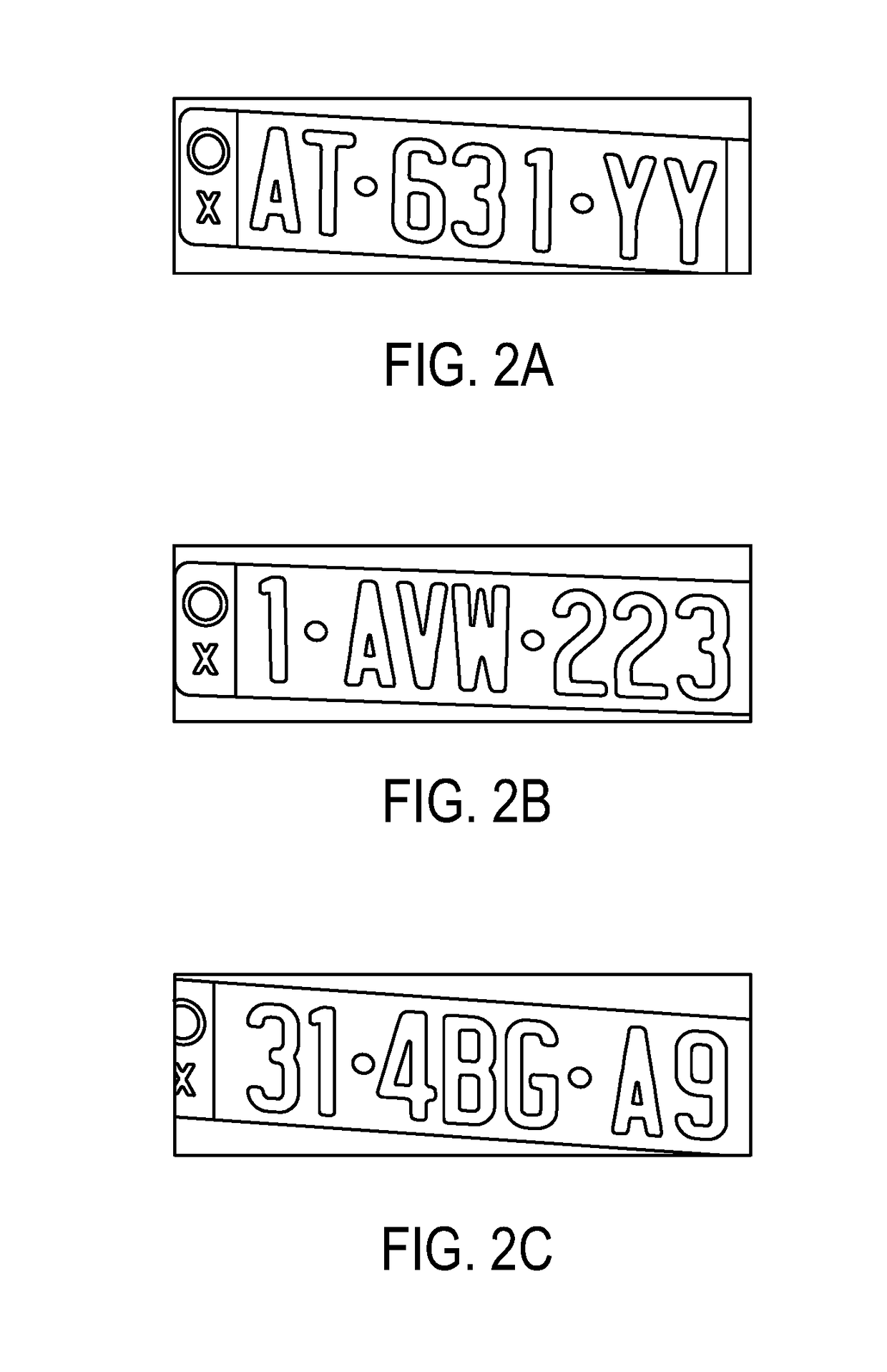License plate recognition with low-rank, shared character classifiers
a technology of shared character and license plate recognition, which is applied in the field of low-rank, shared character classifiers, can solve the problems of several thousand annotated license plates and difficulty in using license plate recognition tasks
- Summary
- Abstract
- Description
- Claims
- Application Information
AI Technical Summary
Benefits of technology
Problems solved by technology
Method used
Image
Examples
example 1
Results-Example 1
[0052]The disclosed method was evaluated in two scenarios. The first scenario focused on the accuracy of the rarest character-position pairs:
[0053]FIGS. 7A-D shows the absolute improvement in recognition rate of the disclosed low-rank network with respect to the full-rank baseline for the rarest character-position pairs for as a function of how rare the pair character-position was in the training set. To evaluate the effect of dimension d, different plots are shown for several values of d.
[0054]A low value of dimension d may lead to underfitting, while a high value may not bring any improvement over the full-rank baseline. This observation is corroborated in the next example, which focused on global accuracy.
example 2
Global Accuracy-Example 2
[0055]In the second scenario, the global performance of the approach for license plate recognition was focused on, reporting both recognition accuracy and character error rate. In this example, the disclosed approach was evaluated on the task of license plate recognition. The results were compared against the full-rank baseline, as well as other existing approaches. Two measures of accuracy are reported. The first measures is the recognition rate (RR), which denotes the percentage of test license plates that were correctly recognized, and is a good estimator of the quality of the system. The second measure is the character error rate (CER), which denotes the percentage of characters that were classified incorrectly. This measure provides an estimation of the effort needed to manually correct the annotation. The results are shown in Table 1 for the second and third datasets.
TABLE 1Wa-datasetCl-datasetModelCER ↓RR ↑CER ↓RR ↑(a)OCR2.288.5925.457.13(b)U.S. Ser. ...
PUM
 Login to View More
Login to View More Abstract
Description
Claims
Application Information
 Login to View More
Login to View More - R&D
- Intellectual Property
- Life Sciences
- Materials
- Tech Scout
- Unparalleled Data Quality
- Higher Quality Content
- 60% Fewer Hallucinations
Browse by: Latest US Patents, China's latest patents, Technical Efficacy Thesaurus, Application Domain, Technology Topic, Popular Technical Reports.
© 2025 PatSnap. All rights reserved.Legal|Privacy policy|Modern Slavery Act Transparency Statement|Sitemap|About US| Contact US: help@patsnap.com



